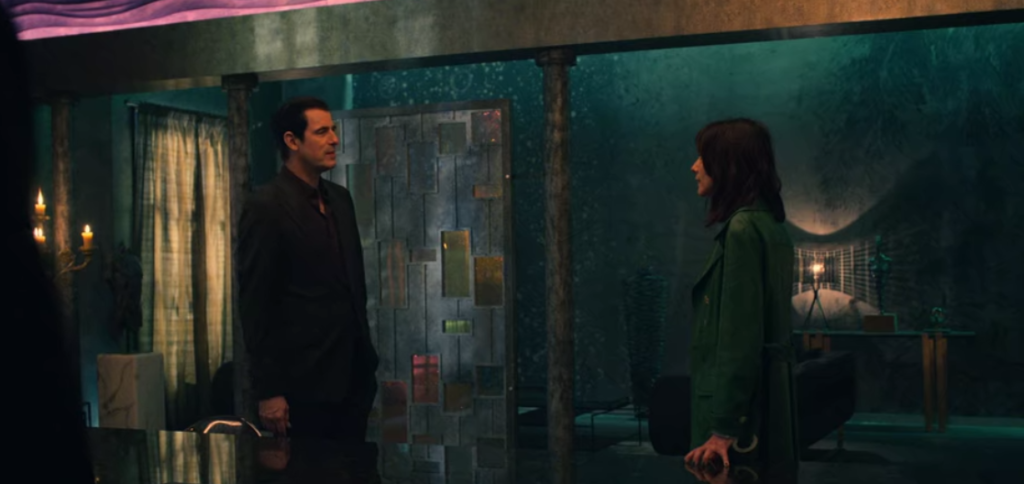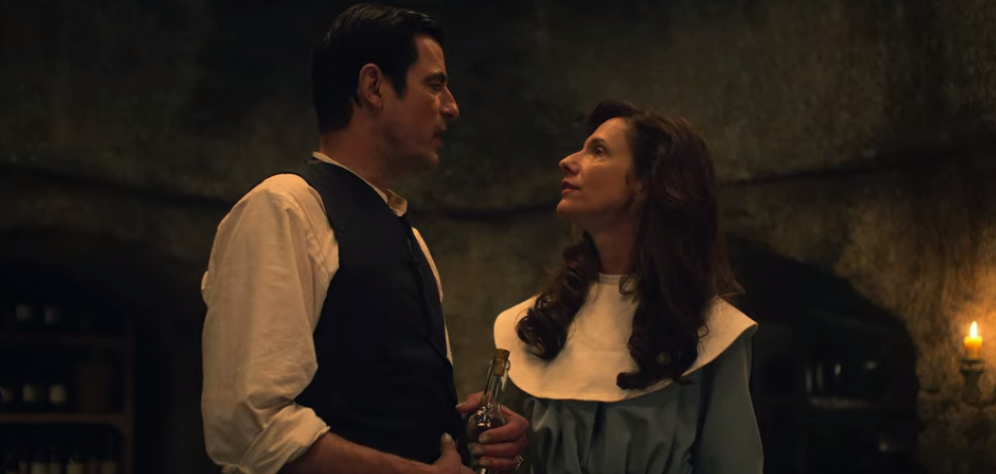The start of 2020 feels like a faint memory. Like many people, I sat down at the first of the year and devoured all three episodes of BBC/Netflix’s new adaptation of Dracula. I was absolutely stunned by the first two episodes and then felt like the third episode lost its way (or was a test setup for a whole new series) only to have it come crashing down in a blaze of fire.
Amid the carnage is Sister Agatha Van Helsing. She is a portmanteau of two characters from the original novel: Sister Agatha, the nun who wrote letters to Mina Murray when Jonathan Harker escaped Dracula’s clutches and sought refuge at her convent, and Abraham Van Helsing, a professor and doctor with an interest in the otherworldly. Leave it to Steven Moffat and Mark Gatiss to refashion another literary classic, and in the process, invent a new heroine for the ages.
Now in quarantine (hello, all you fellow self distancers), I’ve had time to revisit the series, as well as bits of the book, and I keep finding myself drawn to Sister Agatha (and later in the series, her distant relative Zoe Van Helsing).
In Bram Stoker’s novel, heroine Mina Murray is called the “light of all lights,” but Sister Agatha is more ambivalent. Yes, she is a woman of God, but like any good relationship, it’s a complicated one and she’s constantly looking for signs of proof of her faith. These are the same symbols that cause Dracula to cower in fear. She looks to Dracula and his darkness to understand the light.
But she never cowers. Not from the first moment they meet at the gate of her convent to the moment of her death—or her clever reincarnation via Zoe. She’s never afraid of Dracula; rather she’s fascinated by him, in the same way Benedict Cumberbatch’s modern Sherlock gets pulled into solving a crime. The game is afoot, and Sister Agatha ends up playing the longest game of them all.
Echoes in Reincarnation
Out of the three episodes, Sister Agatha takes up the focus in the first two. At first, she pushes the plot along, pulling Jonathan Harker’s confession out with calm countenance and wry humor. She even slips Mina into the convent (and into a nun’s habit) to prove how out of sorts he is. Later, she draws the Count right to their doorstep, and unphased by Dracula’s naked and bloody form (post transformation from a wolf), she cuts her hand and flings blood to the ground, calling him out for the beast he truly is.
We (as the audience) find out near the end of episode two she also allows herself to be bitten to save Mina. Despite the fact that he’s been slowly draining her over the course of their ocean voyage to England, she’s able to thwart him once again, even though she goes down with the ship. When we reach the close of the second episode and find ourselves in modern-day England, the first face Dracula sees staring back at him is Zoe Van Helsing, the spitting image of Sister Agatha, long dead after his hundred odd years of sleep.
Other Dracula adaptations have touched on reincarnation as a theme, most famously Francis Ford Coppola’s film which reenvisioned Mina Murray as the Count’s long lost wife Elisabeta. And with the sudden shift to modern times, Zoe is a physical anchor to her predecessor. Dolly Wells does a fine job of carving out two distinct characters. Where Agatha is bold, Zoe is more reserved although not less curious. Whereas Agatha’s area of concentration (and personal concerns) was rooted in faith, Zoe is grounded in science.
As the third chapter unfolds and Zoe drinks Dracula’s blood as a way to fight the cancer raging through her body, it actually does something else—it syncs Sister Agatha’s memories and thoughts with her own. Throughout the series, Dracula often describes people as having different flavors and argues that they live on in him forever—and Sister Agatha was brave enough to take the gamble. Now the two characters have finally merged for the final act, and faith and science are married at last in one form.
Unlike Dracula’s other brides, both Agatha and Zoe’s wardrobe is stripped back and nondescript, but there’s still meaning hidden in the muted color palette. Sister Agatha’s robes are a light periwinkle, which represents calmness. The color is repeated in Zoe’s last outfit, which is topped with a forest green coat — a hue that recalls birth, even though Zoe is near death.

Further Meditations on Life and Death
In the original novel, Dracula’s death feels like a denouement rather than a climax. He’s killed quickly, with nary a word spoken or long speech to be seen. And by the end, the strong female voices that filled the first half of the book with their letters and personal musings have gone all but silent, even though Mina stands among the distinguished fellowship of vampire hunters.
In this adaptation, Mina is equally absent, save for setting up the Jonathan Harker Foundation which Zoe Van Helsing now runs. The Lucy Westenra subplot that fills up most of the third episode takes away from the focus between Dracula and Zoe, save for holding the final clue for Zoe (and Agatha) to defeat him.
“Consider Count Dracula, who cannot bear to look in a mirror. Dracula, who won’t stand revealed in the sunlight, who cannot enter a home without invitation. These aren’t curses. They are merely habits that become fetishes that become legends that even you believe. The rules of the beast, as we discussed so very long ago. But why? What are you afraid of? You are a warrior from a long line of warriors. Your grandfather died in battle. Your father, your brothers, your sons, their sons. All of them fell as heroes on the battlefield. But not you. Not Count Dracula. The warlord who skulks in the shadows and steals the lives of others…who sleeps in a box of dirt but dreams of a warrior’s grave. Who suddenly found himself in thrall of the girl in love with the thing he fears the most: death.”
Through Zoe, Sister Agatha is able to finally call Dracula’s bluff. She disarms him completely with words and taunts him to roll the dice as she once did hundreds of years before. When he drank from Agatha, he took her life—but when he drinks from Zoe, he finds death and with it, peace in the arms of the only woman that could have matched him in this life—and the afterlife.
Before choosing his death, he notices that Agatha/Zoe is in pain. But once again, she proves resilient and unshaken, merely saying:
“I am equal to it.”
Dracula once commented that Sister Agatha was one of the most exquisite lives he’d ever encountered, and now we have Steven Moffat, Mark Gatiss and the exceptional Dolly Wells to thank for this new annotation to Dracula lore.


Comments are closed.